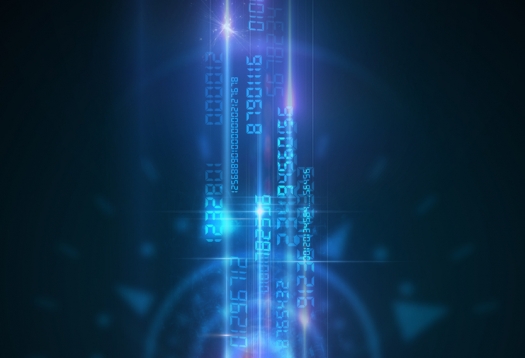US researchers show 4Gbps data rate with GaN laser diode

A team from the University of California, Santa Barbara has demonstrated a record 4Gbps data rate at room temperature with a commercial high power 450nm GaN laser diode.
Visible light communication (VLC) is being considered as a way to dramatically increase wireless data traffic constricted by limited available RF spectrum. Additional advantages include the broad range of available THz frequencies in the unlicensed visible-light bandwidth and lack of interference with other radio spectrum and sensitive electronic equipment.
Progress has already been reported for high-speed data transmission using LEDs as a visible light transmitter. 400MHz modulation bandwidth was demonstrated in 2012 using a micro LED array to take advantage of a small chip resulting in a small RC time constant by a team led by Jonathan McKendry from the University of Strathclyde. However, due to its carrier lifetime limit (on the order of 1ns), the data transmission rate of simple On-Off Keying (OOK) modulation was limited to 1.5Gbps.
Using orthogonal frequency-division multiplexing (OFDM), a transmission rate of 3Gbps has also been reported using an LED. In white light communication, even if a blue filter is installed at the photo-detector to block the slow, yellow signal from the phosphor conversion with long photoluminescence phosphor lifetime (on the order of several µs), the resulting bandwidth is still low (~20MHz) due to the reduced power from the filter and the inherent low bandwidth of the LED source. Increasing the modulation bandwidth is necessary for further improvement in high data transmission rates in VLC systems.
Recent work on GaN laser diode-based VLC showed significant improvement in the modulation bandwidth because the modulation speed of laser diodes is controlled by the photon lifetime (on the order of ps) instead of the carrier lifetime like LEDs. A 1GHz VLC system bandwidth for a 450nm laser diode was demonstrated for the concept of RGB free space transmission by Tsonev, Videv, and Haas at Edinburgh University.
Also a high-speed VLC using a 422nm blue laser has been reported with a 1.4 GHz bandwidth and 2.5 Gbps of error free transmission by Scott Watson and colleagues at the University of Glasgow. This is almost three times larger than the record bandwidth of the blue LED-based VLC, with the bandwidth of this system being limited by the response of the photodetector and, not the laser diode.
While laser-based VLC will suffer less from the phosphor response than LED systems due to its higher power operation at high current density and larger inherent bandwidth than LEDs, the absence of high-speed photodetectors in the blue spectral region has limited the measurement of bandwidth above the GHz level in the past.
This was not an issue in LED-based VLC systems, say the researchers, because the LED bandwidth was easily covered by available silicon photodetectors.
In this latest work on VLC systems, the University of California team demonstrated what they believe is the first high-speed VLC measurement limited by the bandwidth of 450nm laser diode with a UV-extended high-speed photodetector. They specifically chose a UV-extended high-speed photodetector available for GHz level bandwidth measurement in blue range.
The researchers say that the bandwidth of 2.6GHz (achieved at an injection current of 500mA) and a 4Gbps data transmission rate by direct NRZ OOK modulation demonstrates the great potential for high power lasers in visible light communication, overcoming the intrinsic limitations of LEDs. They are now doing further work with phosphor converted blue light and short pass filters for white light communication.
"˜4Gbps direct modulation of 450nm GaN laser for high-speed visible light communication' by Changmin Lee et al; Optics Express Vol. 23, Issue 12.































